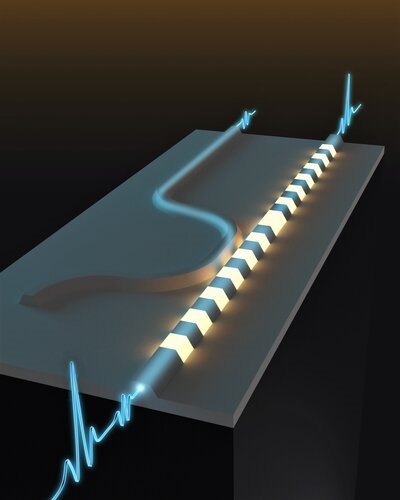
The Caltech team developed an optical switch that allows switching to occur in just 50 femtoseconds. (Image Credit: Y. Wang, N. Thu, and S. Zhou)
Optics could lead to faster speeds with less power and more task performances in computing. However, optics-based systems require electronics-based transistors for efficient data processing. Caltech engineers recently developed a complete optical switch using optical nonlinearity. Their creation could pave the way toward ultrafast all-optical signal processing and computing.
The team achieved this breakthrough by applying a nonlinear lithium niobate crystalline material consisting of niobium, lithium, and oxygen. Although this material isn’t produced in nature, it’s become a necessity for optics. The material’s generated output optical signals aren’t proportional to the input signals due to the crystal’s special atom arrangement.
Recent nanofabrication technique advancements allowed the team to develop lithium niobate-based integrated photonic devices that confine light in a small space. Smaller spaces also result in increased light intensity with equivalent power. This means light pulses transmitting information through an optical system deliver a stronger nonlinear response. In addition, the engineers temporally confined the light. In that case, they reduced the light pulses’ time and applied a special design to ensure each pulse remains short while propagating through the system. As a result, each pulse’s peak power increased.
Both these techniques strengthened a certain pulse’s energy nonlinearity, causing the photons to affect one another on a stronger level. Overall, this produces a nonlinear splitter where light pulses move to two different outputs, depending on their energies. Therefore, this process performs switching in just 50 femtoseconds. In comparison, the most advanced electronic switches take tens of picoseconds.
Have a story tip? Message me at: http://twitter.com/Cabe_Atwell
